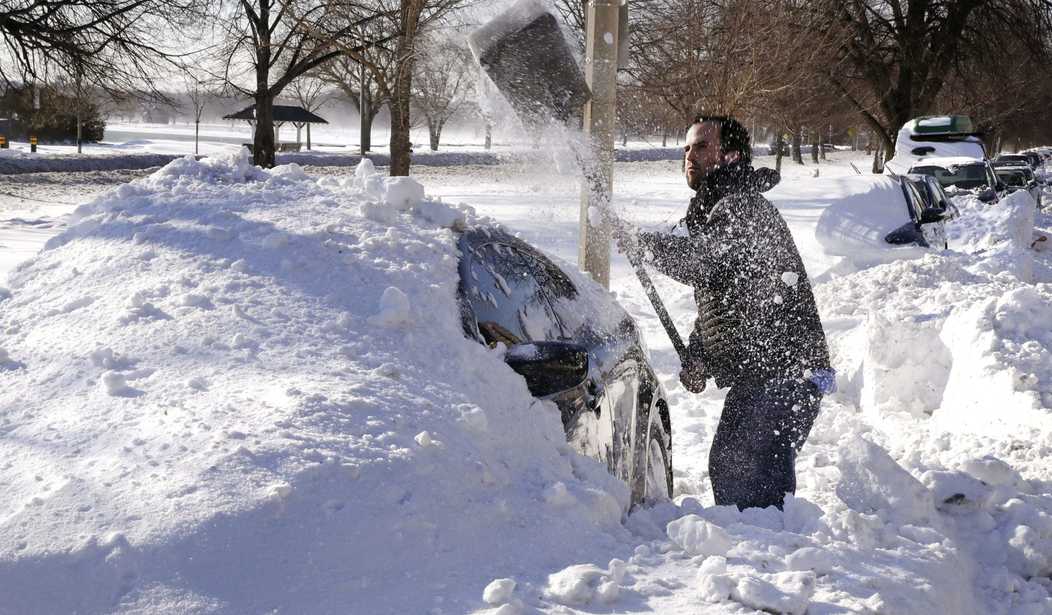You’re gonna need a thicker sweater.
Either that, or a fatter bank balance.
Why? For the foreseeable future, we are likely to see the nasty combination of higher fuel costs and colder winter weather.
There are three reasons: Oil supplies look set to get interrupted this year, the dollar is weaker, and activity on the surface of the sun portends a period of frigid winters.
Here’s the detail.
Energy supply interruptions?
“Venezuela keeps getting worse and worse,” says Joe McMonigle, senior energy policy analyst at Hedgeye in Washington and former chief of staff at the Department of Energy.
The socialist country, which is one of the world’s largest oil producers pumping more than 2 million barrels a day, is experiencing economic turmoil. In addition to lack of food and other necessities, the country is plagued by hyperinflation. The annual rate hit around 7,000 percent, according to Steve Hanke, professor of applied economics at Johns Hopkins University and a hyperinflation expert.
What worries McMonigle is that the complete breakdown and collapse of the Venezuelan economy would quickly lead to the state-owned oil company PDVSA shutting down production. Given Venezuela is a significant oil producer, such a production outage would send crude prices higher.
Meanwhile, McMonigle also sees an elevated risk of the Trump administration hitting Iran with sanctions. Trump didn’t rip up the so-called nuclear deal in January but made it clear that the Islamic Republic is on its final warning. “People are realizing that Trump is serious about this,” says McMonigle. ”Even former Obama officials thought that he wouldn’t walk away.”
If Trump does impose full sanctions on Iran, it would mean that the world oil market would see a cut in supply of up to one million barrels a day. As with Venezuela, the supply outage would send prices higher.
Higher oil prices would mean that most things made from crude oil, such as heating fuel, would see a jump in price as well.
Limp dollar means higher energy prices
Since late 2016, the dollar has lost more than 10 percent of its value against the world’s major currencies, according to data from the St. Louis Federal Reserve.
The matter was exacerbated at the recent meeting of the World Economic Forum in Davos when Treasury Secretary Steve Mnuchin seemed to suggest that the U.S. benefited from a weak dollar policy.
“Treasury secretaries since Robert Rubin have never deviated from the strong dollar mantra,” states a recent report from Brown Brothers Harriman. “That mantra has never really meant much, but to deviate from it suggests that U.S. policymakers desire a weaker dollar.”
The result of Mnuchin’s words was that currency traders quickly dumped their dollars.
“The market responded by taking the greenback to new multi-year lows against the euro and [the British pound] sterling,” the report continued.
The BBH report noted that it is unlikely that the Treasury secretary wants a weaker dollar, but also pointed out that knowing that won’t stop the greenback from dropping.
So, what? All energy prices, including natural gas and crude oil, get priced in dollars. That means that when the dollar drops in value the cost of energy tends to increase.
Frigid weather next year as well?
This winter’s frigid weather in the U.S. isn’t likely to be a freak event. Unfortunately, it is probably going to chill us to the bone for at least another couple of years.
The reason comes down to activity on the face of the sun. The number of spots appearing on the solar surface varies over a relatively predictable cycle, which tends to run around 11 years. NASA tracks the spot count and publishes regular forecasts on the spot count.
Some observers believe that there is a correlation between the number of spots on the sun and the temperature on the earth. In other words, fewer spots result in lower temperatures.
History indicates that there is a correlation although the exact nature of why this happens is not wholly understood. However, we do know that during a prolonged period of low sun-spot activity from 1645 through 1715 Western Europe went through a mini ice-age where London’s river Thames froze over. This period was known as the Maunder Minimum.
Shawn Hackett, who writes the Hackett Money Flow Commodity Report newsletter, believes we could now be entering a repeat of that historical deep freeze with a new so-called “Grand Solar Minimum.” In a recent report, he wrote “Grand Solar Cycle Trough Dead Ahead,” meaning few if any spots will be seen on the sun’s surface. His focus is on grain markets and last year he correctly forecast that December would see record-breaking low temperatures in the U.S.ee
If Hackett continues to be correct, then the next few winters will probably be frigid.
These three factors, likely energy supply interruptions, a weaker dollar and bone-chilling winters, means it is probably time to stack the closet with some extra warm clothes and budget for higher heating bills.









Join the conversation as a VIP Member